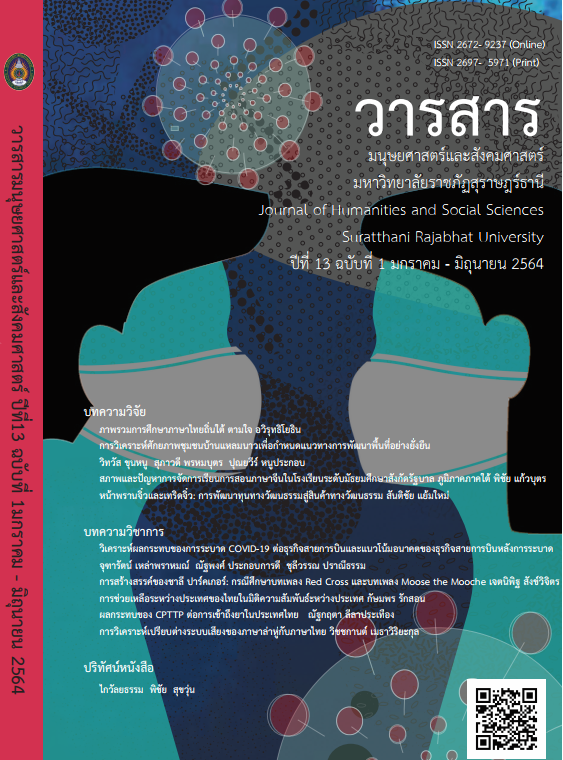Charile Parker’s Creation: The Case of Red Cross and Moose the Mooche
Main Article Content
Abstract
This article intends to study Melodic Line and Chord Progression present in Red Cross and Moose the Mooche, both of which are composed by one of the most prominent Bebop musicians, Charlie Parker. Their contexts are Bebop. Similarly, both have been employed a Contrafact used in George Gershwin’s I’ve Got Rhythm, of which Chord Progression is Rhythm Changes. It has been found the Red Cross’s Melodic Line has employed the concepts of Motif Repetition, Rhythmic Repetition and Symmetrical, while Moose the Mooche Chromatic, Target Notes, Enclosure and Syncopation. In terms of Chord Progression, there are a few of movements in Red Cross’s measure A, while there is a vivid interplay between the ii-V Chord Progression and the Circle of Fifths in Moose the Mooche’s B measure.
Contrafact, Melodic Line and Chord Progression are the important concepts found in Parker’s pieces, which are Red Cross and Moose the Mooche in this case. Those concepts hugely influenced Parker and his role in Bebop musical scene.
Article Details

This work is licensed under a Creative Commons Attribution-NonCommercial-NoDerivatives 4.0 International License.
All published manuscripts have been verified by peer-peer professors in the fields of humanities and social sciences. Reprinting of the article must be authorized by the editorial staff.
References
ณัชชา พันธุ์เจริญ. (2552 ). พจนานุกรมศัพท์ดุริยางค์ศิลป์. พิมพ์ครั้งที่ 3 กรุงเทพมหานคร:
สำนักพิมพ์เกศกะรัต.
Coker. J.(1991). Elements of the Jazz Language for the Developing.
Van Nuys, CA: Alfred Publishing.
Levine. M. (1995). The Jazz Theory Book. Petaluma, CA: Sher Music.
Martin. H. (2001). Charlie Parker and Thematic Improvisation. Lanham,
MD: Scarecrow Press, Inc.
Dariusz. T. (2018). Jazz Theory From Basic to Advanced Study. New
York, NY: Routledge.


